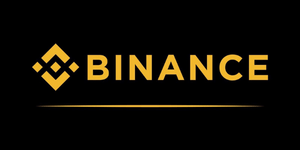-
Bitcoin Price: $99,462
0.99%
-
All-Time High: $99,486.00
0.23%
- 24h High / 24h Low: $99,537 / $97,394
-
Market Cap: $1,964,813,248,558
0.82%
- 24h Volume: $95,509,020,800
Explained: Crypto Lingo – Understand the Basics

Source: Unsplash.com
DeFi, HODL and NFT sound like a different language to you? Blockchain terminology can be very confusing, especially if you are just starting to explore the field of cryptocurrencies. Below you will find common blockchain terms and popular crypto jargon simply explained.
First of all: Who is Satoshi Nakamoto?
This is probably the most frequently asked question in the crypto space. The very first cryptocurrency Bitcoin was founded by an anonymous person or group of individuals, named Satoshi Nakamoto. Satoshi Nakamoto published the Bitcoin whitepaper titled “Bitcoin: A Peer-to-Peer Electronic Cash System” in late 2008 and the first Bitcoin version (Bitcoin Core) in January 2009. Satoshi Nakamoto also created the largest online forum for discussing topics related to Bitcoin, cryptocurrencies in general and blockchain technology named Bitcointalk on November 22, 2009.
The pseudonym Satoshi Nakamoto has been repeatedly associated with different people, but his or her identity remains a mystery to this day.
Get started: Cryptocurrency, Blockchain, Coin, Token
Cryptocurrency & Blockchain
A cryptocurrency (or crypto) is a digital asset secured by cryptography. Cryptocurrencies are based on the so-called distributed ledger technology, whereby all transactions are stored on the blockchain. Like traditional FIAT currencies, cryptocurrencies also act as a medium of exchange, however with no intermediaries (e.g. banks) monitoring the transactions.
The term blockchain typically describes a decentralized, transparent, public ledger that allows units of value to be transferred securely using public key encryption and proof-of-work technology. Broadly speaking, it is a database shared across a network of computers. In this database, each block in the chain contains a certain number of transactions and whenever a new transaction is performed on the blockchain, a record of this transaction is added to the ledger of each participant in the network. This decentralised database, which is managed by various network participants, is known as Distributed Ledger Technology (DLT).
Difference between Coin & Token
A coin is an independent cryptocurrency such as Bitcoin or Litecoin. Unlike tokens, coins are based on their own blockchains and can therefore operate independently of other coins. Also a single unit of a cryptocurrency or the well-known Bitcoin forks such as Bitcoin Cash or Bitcoin Gold are referred to as coins.
A token is based on existing blockchain platform or protocol and depends on its functioning. Today, numerous tokens exist, a large majority of which are based on the Ethereum blockchain (ERC-20 standard) or the Binance Smart Chain (BEP-20 standard).
Although there is a difference between coins and tokens, as just explained, all cryptocurrencies other than Bitcoin are referred to as altcoins. The term altcoin is short for alternative coin. It alludes to the fact that Bitcoin emerged as the first or original cryptocurrency in 2009 and subsequent cryptocurrencies are classified as “alternative” or “alternate” coins. A prominent example of an altcoin is the second largest cryptocurrency Ethereum.
Participating in crypto: Mining, Airdrop, ICO, Staking
The process of solving complex computational puzzles is referred to as mining as an analogy to mining other commodities like gold or silver. For example Bitcoin mining is the process by which new Bitcoins are introduced to the system. By spending compuation power, Bitcoin miners are securing the network and processing transactions.
An airdrop is a marketing tool for distributing cryptocurrencies to the public in order to promote new blockchain projects. Most of the time, recipients do not have to fulfill any specific tasks to receive an airdrop, sometimes the holding of a certain number of coins or tokens is a prerequisite to qualify for an airdrop.
Unlike an ICO (Initial Coin Offering), digital assets are distributed for free in an airdrop and there is no purchase involved. In contrast, in an ICO, newly issued cryptocurrencies are typically sold to investors in exchange for fiat currencies or other cryptocurrencies.
The term staking describes the commitment of an investor to support a blockchain network with their cryptocurrency assets for a certain period of time. The longer the stakers commit their assets, the greater the subsequent rewards. By the end of the selected staking period, all stakers will receive the original assets they deposited into the Decentralized Autonomous Organization (DAO), as well as any rewards they earned during the staking period.
Trending terminology: DeFi & NFT
The acronym DeFi stands for “Decentralized Finance” and describes new forms of financial protocols that are based on smart contracts and do not require a central intermediary. In contrast, in traditional financial markets, central instances such as banks are indispensable for financial transactions and services. Recently, many new DeFi projects such as decentralized exchanges, stablecoins or peer-to-peer lending services have emerged in the crypto sector, mostly based on the Ethereum blockchain.
NFT stands for “Non-Fungible Token” and refers to a cryptographic token on the blockchain that cannot be replicated or replaced. NFTs act as certificates for the authenticity and uniqueness of a digital asset and give the owner proof of ownership. NFTs are created via smart contract technology (e.g. ERC-721 token standard). Especially in the art and music scene, digital works have recently been offered as Non-Fungible-Tokens. In March 2021, Twitter CEO Jack Dorsey’s first tweet was auctioned off as a NFT for $2,9 million.
Good to know: Popular acronyms
HODL
The first crypto slang term to be explained here is not even an acronym. In 2013, the term HODL derived from a misspelling of the word HOLD by a drunken Bitcoin trader who wanted to hold on to his profits instead of selling. One of the first cryptocurrency memes was born. The original forum post on Bitcointalk by the user GameKyuubi can be found here.
FUD: Fear, Uncertainty and Doubt
The term describes a communication strategy in which competitors or, in the crypto context, projects, cryptocurrencies or the entire crypto market are to be weakened by misinformation or negative news. FUD is spread to create “Fear, Uncertainty and Doubt” in order to influence people’s opinions.
FOMO: Fear Of Missing Out
In the context of investing the term describes a fear of regret for missing out a potential profitable investment (i.e. the overwhelming feeling that one must buy a certain asset before the price rises even further).
HFSP: Have Fun Staying Poor
In the context of cryptocurrencies, the term describes a taunt to those who do not believe that a particular cryptocurrency coin or token will increase significantly in value. In other words, they don’t believe that a particular cryptocurrency will “go to the moon”.
WAGMI: We’re All Going to Make It
This acronym means that everyone will be successful. This acronym is often used in reaction to good news or a huge spike in cryptocurrency prices. Another term referring to a sharp rise in the price of cryptocurrencies is LAMBO. The question “When Lambo?” aims to find out when cryptocurrencies in general or a cryptocurrency in particular will reach a certain price so that its owner can afford a Lamborghini (Lambo for short).
NGMI: Not Going to Make It
In contrast, this slang term means that a person will not be successful due to bad decisions or poor judgement.
Last but not least, perhaps the most important acronym in the crypto sphere is DYOR, which stands for Do Your Own Research. The term DYOR aims to reduce the number of poor informed cryptocurrency investors. It is meant to encourage new investors to do a proper research before investing large sums of money into a cryptocurrency. In addition, the term is also frequently used as a disclaimer when cryptocurrency analysts publish public posts or articles on social media platforms or blogs.
With this in mind, get started now, do not FOMO and don’t forget to DYOR!
Disclaimer
This article does not provide investment advice. Historical cryptocurrency data is not a guarantee of future market developments. The author may hold several of the cryptocurrencies mentioned in this article.
Read more About
THIS WEEK’S
Trending Posts
-
 September 12, 2024
September 12, 2024The most common misconceptions about Bitcoin and cryptocurrency
-
 September 4, 2024
September 4, 2024Stablecoins: Financial stability or centralization?
-
 August 11, 2024
August 11, 2024Exploring the benefits and potential uses of Litecoin
-
 August 8, 2024
August 8, 2024Five reasons why Bitcoin is superior to FIAT money
-
 July 15, 2024
July 15, 2024Dogecoin: the internet's favorite cryptocurrency
SPREAD THE WORD
Share this Post
HAND-PICKED
Curated Cryptocurrency Posts
Didn't find the answer you were looking for?
Feel free to check our cryptocurrency market data or our comprehensive blockchain glossary.
















